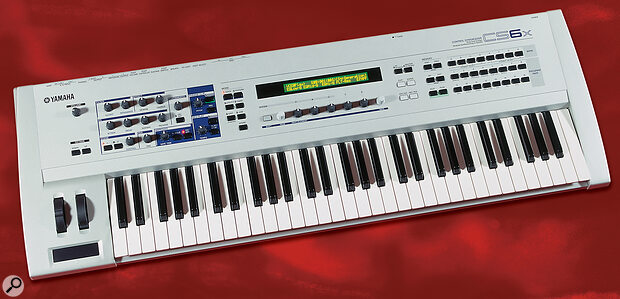 On the CS6x there are no restrictions on the use of Performance voices — you can play up to 16 at once.
On the CS6x there are no restrictions on the use of Performance voices — you can play up to 16 at once.
I'm really excited about buying a synth as this will be my first (I have portable keyboards). I'm looking for techno sounds but don't plan on playing trance or techno music, so I thought the Yamaha CS series would be the right choice. I can get the CS2x for around half the price of the CS6x, but is it really worth paying the difference for the more expensive model? I would also like to know if I can sequence with the CS6x, without using an external peripheral?
Oscar Vargas
<!‑‑image‑>Assistant Editor Sam Inglis replies: The main difference between the 2x and the 6x concerns the restrictions on the use of Performance patches. The CS1x and CS2x both have two categories of sound, 'Performance' sounds and XG sounds. The former are the special, high‑quality dance sounds Yamaha devised specially for the CS series synths. The latter are generic instrument sounds of the kind found on home keyboards and so forth (XG is an extension of the General MIDI protocol). On the CS1x and CS2x, you can only use one Performance at a time — of the 13 voices you can play back at once, 12 have to be XG voices.
On the CS6x, however, there are no restrictions on the use of Performance voices — you can play up to 16 at once. You can also add PLG‑series expansion boards if you want to expand the sounds (the PLG150AN, for instance, adds the guts of their AN1x physical modelling synth, which would be good for the kinds of sound you're after).
However, there are no XG voices as standard, so if you do want XG sounds you'll have to buy the PL100XG expansion card. The sequencer on the CS6x is really a playback sequencer only, so if you want to put together your own sequences, you'll need to use an external MIDI sequencer.
